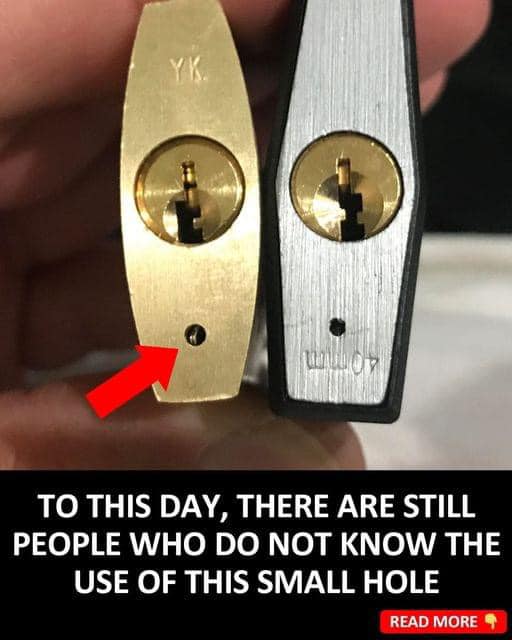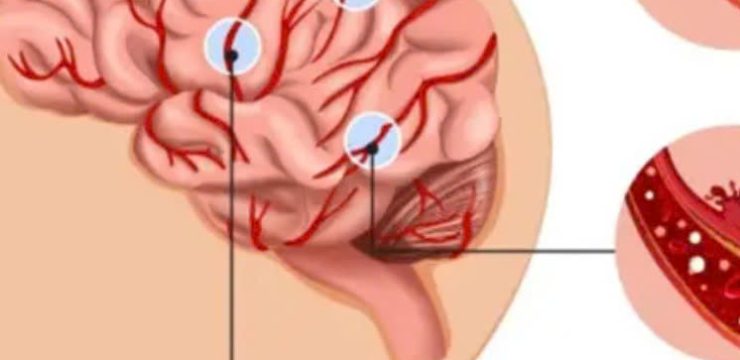Padlocks are everyday tools that serve a big purpose. From securing bikes and toolboxes to safeguarding outdoor sheds and gates, these sturdy metal locks are built to withstand harsh weather and deter theft. But have you ever noticed a small, mysterious hole at the bottom of a padlock? It’s not just a random design element—it actually serves an important function.

The Secret Function of the Padlock Hole
Padlocks are designed to keep your belongings safe, but being made of metal, they can be prone to rusting due to water damage and exposure to the elements. This is where the small hole at the bottom of the padlock comes into play. The hole acts as a drainage point, allowing any trapped water to escape. This clever design prevents the accumulation of moisture inside the lock, which helps prevent rust and prolongs the lifespan of the padlock.
An Alternative to the Padlock Hole
While the tiny hole in padlocks has proven to be a useful feature, manufacturers have also developed weatherproof padlocks. These locks are built to resist rain, snow, and other harsh conditions, providing enhanced protection for your belongings. They often include rubber or plastic coatings that shield the internal components from water and dirt, ensuring consistent performance year-round. Despite these advancements, the classic drainage hole remains an effective solution in traditional padlocks.
Another Role of the Padlock Hole
The small hole at the bottom of a padlock isn’t just for drainage; it also serves another critical purpose. Over time, padlocks can become difficult to open, even with the correct key or code, due to dirt buildup or internal corrosion. The small hole can be used to lubricate the lock’s internal components. By applying a bit of synthetic oil or lubricant through the hole, you can help loosen any stuck parts and restore the lock’s functionality. This dual purpose makes the hole an essential feature of padlock design.
Other Everyday Items with Hidden Features
Padlocks aren’t the only common objects designed with hidden or dual functions. Here are a few more everyday items that have been created with features you might not know about:
Screwdrivers as Wrenches
If you’ve ever worked on a car or repaired something in a tight space, you know how challenging it can be to reach certain areas. Fortunately, many screwdrivers are designed to be used as makeshift wrenches. By sliding the handle of a screwdriver into the open end of a wrench, you can create extra leverage to reach tight spaces. This clever design adds versatility to a simple tool, making it even more useful for DIY enthusiasts and mechanics.
Color Swatches on Clothes
Clothing used to come with small fabric swatches, and while some still do, many people are unaware of their purpose. These swatches are meant to help with color matching if the garment gets torn or damaged. They also allow users to test how laundry detergents or cleaning solutions will affect the fabric’s color, ensuring the safety of the garment before washing. Essentially, the swatch is a mini tester that helps maintain the longevity of the clothing.
Brass Padlocks and Doorknobs
Brass is not just chosen for its durability but also for its antibacterial properties. You’ll often find brass used in high-contact areas like padlocks, doorknobs, and stair railings. The metal’s ability to kill bacteria makes it a popular choice for surfaces that are frequently touched, adding a layer of safety to its functional use.
Gas Tank Indicators in Cars
It’s common to forget which side of the car the gas tank is on, especially if you drive multiple vehicles. Car manufacturers have made this easier by adding a small gas indicator on the dashboard. This triangular symbol, typically found near the gas gauge, points to the side of the car where the gas tank is located. It’s a simple yet effective design that prevents confusion when pulling up to the pump.
Heinz 57 Bottle Logo
The famous Heinz 57 label is more than just a brand logo. On glass bottles of Heinz ketchup, the “57” isn’t just decorative—it actually marks the optimal spot to tap the bottle for an even flow of sauce. So, the next time you’re struggling to get ketchup out of a glass bottle, try tapping on the “57” for a smoother pour.
Conclusion: Clever Design for Everyday Convenience
Padlocks and other common items with hidden features are prime examples of how thoughtful design can make life easier and more efficient. From a simple drainage hole in a padlock to using screwdrivers as wrenches, these design elements serve practical purposes that often go unnoticed. The small details built into everyday objects remind us that even the most ordinary items can have extraordinary functions, improving our daily routines in unexpected ways.





